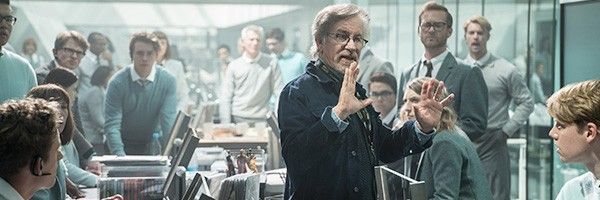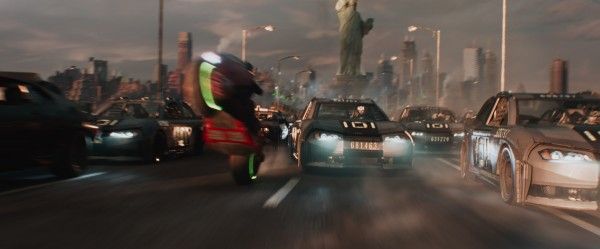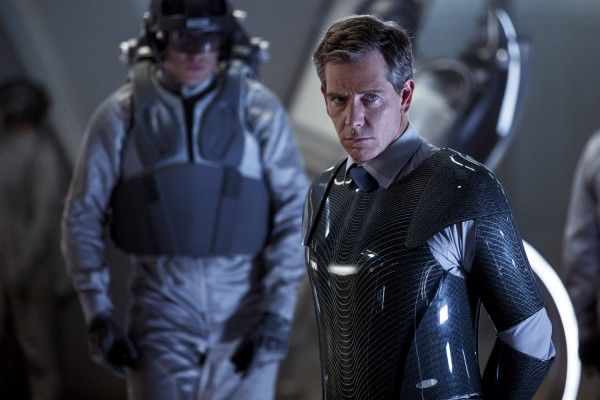from the artists Twitter: Simon Stålenhag for the record: I was oblivious of the stacks, and all but oblivious of the book when I did that
[Edited 5/14/19 11:59am] | |
- E-mail - orgNote -  Report post to moderator Report post to moderator |
http://www.archipanic.com...ng-africa/
Making Africa The Making Africa exhibition at Vitra Design Museum showcases the work of new generations of artists, designers and architects and offers a new vantage point on the continent suggesting solutions for worldwide relevance issues. March 17, 2015
Making Africa – Justin Plunkett, Skhayascraper, Rendering, Limited Edition of 20, 2013, © Justin Plunkett. Courtesy The Cabinet, Cape Town.
| |
- E-mail - orgNote -  Report post to moderator Report post to moderator |
Ready Player One: The Stacks Exterior...2D, Adobe Photoshop, Concep. https://workingnotworking.com/38451-rachel
| |
- E-mail - orgNote -  Report post to moderator Report post to moderator |
http://collider.com/steve...ne/#images
Steven Spielberg on 'Ready Player One' and Why He'll Never Rework His Own Movies Again by Christina Radish --> March 28, 2018
From filmmaker Steven Spielberg and adapted from the book by Ernest Cline, the sci-fi action adventure epic Ready Player One is set in the year 2045 and follows Wade Watts (Tye Sheridan), as he escapes in the OASIS, an immersive virtual universe where most of humanity spends their days, living as any avatar they so choose and with only your own imagination as a limitation. When the OASIS was created by the brilliant and eccentric James Halliday (Mark Rylance), he embedded a three-part contest into it to find a worthy heir for his immense fortune and total control of this virtual world, and as Wade and his friends, called the High Five, take on the challenge, they put themselves directly into the path of danger.At a conference at the film's Los Angeles press junket, director Steven Spielberg talked about why he wanted to make Ready Player One into a movie, the challenges of telling this story, feeding off the passion of the cast, working in such an abstract way that they wore virtual reality goggles on set to fully understand what the world would look like, why this movie was such a great escape, the enormous task of getting all of the pop culture rights, why he'd never go back and rework any of his own movies (after that E.T. disaster), and the role nostalgia plays in his own life.
What was it about this story and these characters that made you want to make Ready Player One? STEVEN SPIELBERG: I think anybody who read the book, who was connected, at all, with the movie industry, would have loved to have made this into a movie. The book had seven movies in it, maybe twelve. It was just a matter of trying to figure out how to tell the story about this competition, in both of these worlds, and to make it an express train, racing toward the third act and, at the same time, make it a cautionary tale about leaving us the choice of where we want to exist. Do we want to exist in reality, or do we want to exist in an escapist universe? Those themes were so profound for me. That theme is consistent throughout the whole book, but there are so many places we could have taken the book.
Why was this a film you were so passionate about making? SPIELBERG: I had a passionate and amazing cast, and I fed off that energy. I'd come to work into work and Olivia [Cooke] would be, "Okay, what do we do now? I can't wait!" And Lena [Waithe] would say, '"Throw anything at me. I'm ready for it!" Every cast member was like that. Ernie [Cline] gave us a playground to basically become kids again, and we did. We made the movie on an abstract set. The only way the cast could understand where they were is that we all had virtual reality Oculus goggles. Inside the goggles was a complete build of the set that you see when you see the movie, but when you took the goggles off, it was a big white space. It was a 4,000 square foot, white, empty space called a Volume. When you put the goggles on, it was Aech's basement or Aech's workshop or the Distracted Globe. The actors had a chance to say, "Okay, if I walk over there, there's the door and there's the DJ." It was really an out of body experience to make this movie, and it's very hard to express what that was like.
Because the theme of reality vs. fantasy is something you're familiar with, in your filmography, is the filmmaking process different when you're making something to escape compared to when you're making something that mirrors society?
SPIELBERG: For me, this film was my great escape. This was a film, for me, that fulfilled all of my fantasies of places I go, in my imagination, when I get out of town. I got to live this for three years. I got to escape into the imagination of Ernest Cline and Zak Penn for three years. It was amazing! But I came back to Earth, a couple of times. I made Bridge of Spies and The Post while I was making Ready Player One. I got that whiplash effect of going from social reality to total escapist entertainment. It's a great feeling, but it also makes my wife and kids kind of crazy. They don't know who dad's gonna be, when he comes home, or which dad they're gonna get.
You have such great music in the film. Did you play any music on set? SPIELBERG: I played a lot of The Bee Gees. A lot of the songs came from Zak Penn and Ernie Cline. Most of the songs are from their playlist.
How difficult was it to get all of the rights for all of the pop culture elements that we see in this? SPIELBERG: My producer, Kristie Macosko [Krieger], spent three years with all the Warner Brothers legal people, getting the rights to everything, and we couldn't get all of them. There were weekly phone calls.
What pop culture call-back in the movie were you most excited about? SPIELBERG: I think Brad Bird is a genius. I saw Iron Giant in theaters. I've been a big fan of Brad Bird's. We actually worked together on something called Family Dog, on television, a long time ago. This is how we honored Brad Bird and Iron Giant.
How did you decide which things from your own movies to keep in the film, and which to not? SPIELBERG: There comes a point where I would've just had to defer to somebody else who liked my movies, and not make a movie about my movies. I let a couple little iconic characters in from my films, especially the DeLorean [from Back to the Future], which came from the book directly. Otherwise, there were a lot of things we could've put in, but we didn't.
Because you're such a perfectionist, have you ever considered going back and reworking any of your previous films? SPIELBERG: Well, I got in trouble for doing that. When E.T. was re-released, I actually digitized five shots, where E.T. went from being a puppet to a digital puppet. I also replaced the guns. When the FBI ran up on the van, they now have walkie talkies. So, there's a really bad version of E.T., where I took my cue from Star Wars and all of the digital enhancements for A New Hope that George [Lucas] put in. I went ahead because the marketing at Universal thought we needed something to get an audience back in to see the movie, so I did a few touch-ups in the film. In those days, social media wasn't as profound as it is today, but what was just beginning erupted in a loud negative voice saying, "How could you ruin our favorite childhood film?" So, I learned a big lesson, and that's the last time I ever decided to mess with the past. What's done is done, and I'll never go back and do anything to another movie that I've made and have control over, to enhance or change it.
How has your relationship with nostalgia changed, over the years? SPIELBERG: That's a great question. I have the most intimate relationship with nostalgia. Since I was 11 or 12 years old, I started taking 8mm movies of my family, on camping trip, when I was a kid growing up in Arizona. When videotape came in, I started taking videotapes. And then, I started taking my 8mm sound movie camera, when I was hanging around [Francis Ford] Coppola and [George] Lucas and [Martin] Scorsese and [Brian] De Palma, and that whole group, back in the 70's. I've got something like 60 hours of footage, of all of us growing up, making movies together, which someday would make an interesting documentary, if I can get the rights to any of these guys. Probably 80% of the footage, they wouldn't want released. Today, in my life, I do all the videos of my own family, growing up. Every single year, I have a really great editor in our office, and he cuts together the whole year in the life of my family, with all of my children and grandchildren. We have little screenings of what's called The Annual Family Video. I basically live in nostalgia. That might be the main reason I reacted and responded so positively to Ernie's book and Zak's script. I'm livin' that way, most of my life. Ready Player One opens in theaters on March 29th.
| |
- E-mail - orgNote -  Report post to moderator Report post to moderator |
Really enjoyed the book, being a child of the 80's I loved all the pop culture references. Thought the book was slightly better than the film (but I do love books) However, got to hear I wanna be your lover! In super cinema surround sound What you don't remember never happened | |
- E-mail - orgNote -  Report post to moderator Report post to moderator |
That was one of Spielberg's worst efforts imo. | |
- E-mail - orgNote -  Report post to moderator Report post to moderator |
Honestly, one of the worst books I have ever read. Not a dreadful idea though, the film breezes by. | |
- E-mail - orgNote -  Report post to moderator Report post to moderator |
Conceived by Urban Space Management, London's Container City first sprang up in the heart of the Docklands in 2001. It took just five months to complete the original 12 work studios, at a height of three stories. Shortly after that a fourth floor of studios and living apartments was added. Container City was designed to be low cost, as well as environmentally friendly. Recycled materials made up 80% of building supplies. Architect Nicholas Lacey and partners and engineer Buro Happold used component pieces to build up adaptable living and work spaces.
Container City I was a success, and in 2002, Urban Space Management added an addition, dubbed Container City II. Reaching five stories high, Container City II is connected to its earlier iteration via walkways. It also boasts an elevator and full disabled access, as well as 22 studios.
| |
- E-mail - orgNote -  Report post to moderator Report post to moderator |
 New topic
New topic Printable
Printable







